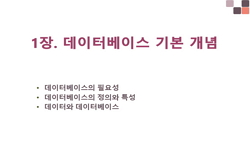Background: The present study employed National Health Insurance Data to explore complex regional pain syndrome (CRPS) updated epidemiology in a Korean context. Methods: A CRPS cohort for the period 2009-2016 was created based on Korean Standard Class...
http://chineseinput.net/에서 pinyin(병음)방식으로 중국어를 변환할 수 있습니다.
변환된 중국어를 복사하여 사용하시면 됩니다.
- 中文 을 입력하시려면 zhongwen을 입력하시고 space를누르시면됩니다.
- 北京 을 입력하시려면 beijing을 입력하시고 space를 누르시면 됩니다.



A Korean nationwide investigation of the national trend of complex regional pain syndrome vis-à-vis age-structural transformations = A Korean nationwide investigation of the national trend of complex regional pain syndrome vis-à-vis age-structural transformations
한글로보기https://www.riss.kr/link?id=A107791974
-
저자
( Joon-ho Lee ) (Soonchunhyang University Bucheon Hospital) ; ( Suyeon Park ) (Soonchunhyang University Seoul Hospital) ; ( Jae Heon Kim ) (Soonchunhyang University Seoul Hospital)

- 발행기관
- 학술지명
- 권호사항
-
발행연도
2021
-
작성언어
-
- 주제어
-
등재정보
KCI등재,SCOPUS,SCIE
-
자료형태
학술저널
- 발행기관 URL
-
수록면
322-331(10쪽)
-
KCI 피인용횟수
0
- DOI식별코드
- 제공처
-
0
상세조회 -
0
다운로드
부가정보
다국어 초록 (Multilingual Abstract)
Background: The present study employed National Health Insurance Data to explore complex regional pain syndrome (CRPS) updated epidemiology in a Korean context.
Methods: A CRPS cohort for the period 2009-2016 was created based on Korean Standard Classification of Diseases codes alongside the national registry. The general CRPS incidence rate and the yearly incidence rate trend for every CRPS type were respectively the primary and secondary outcomes. Among the analyzed risk factors were age, sex, region, and hospital level for the yearly trend of the incidence rate for every CRPS. Statistical analysis was performed via the chi-square test and the linear and logistic linear regression tests.
Results: Over the research period, the number of registered patients was 122,210. The general CRPS incidence rate was 15.83 per 100,000, with 19.5 for type 1 and 12.1 for type 2. The condition exhibited a declining trend according to its overall occurrence, particularly in the case of type 2 (P < 0.001). On the other hand, registration was more pervasive among type 1 compared to type 2 patients (61.7% vs. 38.3%), while both types affected female individuals to a greater extent. Regarding age, individuals older than 60 years of age were associated with the highest prevalence in both types, regardless of sex (P < 0.001).
Conclusions: CRPS displayed an overall incidence of 15.83 per 100,000 in Korea and a declining trend for every age group which showed a negative association with the aging shift phenomenon.
참고문헌 (Reference)
1 Harden NR, "Validation of proposed diagnostic criteria(the"Budapest Criteria")for Complex Regional Pain Syndrome" 150 : 268-274, 2010
2 Wasner G, "Traumatic neuralgias : complex regional pain syndromes(reflex sympathetic dystrophy and causalgia) : clinical characteristics, pathophysiological mechanisms and therapy" 16 : 851-868, 1998
3 de Mos M, "The incidence of complex regional pain syndrome : a population-based study" 129 : 12-20, 2007
4 Verdugo RJ, "Spectrum of cutaneous hyperalgesias/allodynias in neuropathic pain patients" 110 : 368-376, 2004
5 Saetbyeol Jeong, "Role of affective instability on suicidal risk in complex regional pain syndrome: a diary approach (preliminary report)" 대한통증학회 34 (34): 94-105, 2021
6 Stanton-Hicks M, "Reflex sympathetic dystrophy : changing concepts and taxonomy" 63 : 127-133, 1995
7 Ochoa JL, "Reflex sympathetic dystrophy : a disease of medical understanding" 8 : 363-366, 1992
8 Ratti C, "Post-traumatic complex regional pain syndrome : clinical features and epidemiology" 12 (12): 11-16, 2015
9 백민정, "National Trend of Uroflowmetry, Urodynamic Study and Cystoscopy Considering the Change in the Population Structure in Korea from 2010 to 2015" 대한의학회 33 (33): 1-10, 2018
10 Kim H, "Epidemiology of complex regional pain syndrome in Korea : an electronic population health data study" 13 : e0198147-, 2018
1 Harden NR, "Validation of proposed diagnostic criteria(the"Budapest Criteria")for Complex Regional Pain Syndrome" 150 : 268-274, 2010
2 Wasner G, "Traumatic neuralgias : complex regional pain syndromes(reflex sympathetic dystrophy and causalgia) : clinical characteristics, pathophysiological mechanisms and therapy" 16 : 851-868, 1998
3 de Mos M, "The incidence of complex regional pain syndrome : a population-based study" 129 : 12-20, 2007
4 Verdugo RJ, "Spectrum of cutaneous hyperalgesias/allodynias in neuropathic pain patients" 110 : 368-376, 2004
5 Saetbyeol Jeong, "Role of affective instability on suicidal risk in complex regional pain syndrome: a diary approach (preliminary report)" 대한통증학회 34 (34): 94-105, 2021
6 Stanton-Hicks M, "Reflex sympathetic dystrophy : changing concepts and taxonomy" 63 : 127-133, 1995
7 Ochoa JL, "Reflex sympathetic dystrophy : a disease of medical understanding" 8 : 363-366, 1992
8 Ratti C, "Post-traumatic complex regional pain syndrome : clinical features and epidemiology" 12 (12): 11-16, 2015
9 백민정, "National Trend of Uroflowmetry, Urodynamic Study and Cystoscopy Considering the Change in the Population Structure in Korea from 2010 to 2015" 대한의학회 33 (33): 1-10, 2018
10 Kim H, "Epidemiology of complex regional pain syndrome in Korea : an electronic population health data study" 13 : e0198147-, 2018
11 Allen G, "Epidemiology of complex regional pain syndrome : a retrospective chart review of 134patients" 80 : 539-544, 1999
12 최윤숙, "Epidemiology of Complex Regional Pain Syndrome: A Retrospective Chart Review of 150 Korean Patients" 대한의학회 23 (23): 772-775, 2008
13 Birklein F, "Complex regional pain syndromesignificant progress in understanding" 156 (156): S94-S103, 2015
14 Rowbotham MC, "Complex regional pain syndrome type I(reflex sympathetic dystrophy) : more than a myth" 51 : 4-5, 1998
15 Sandroni P, "Complex regional pain syndrome type I : incidence and prevalence in Olmsted county, a population-based study" 103 : 199-207, 2003
16 이호진, "Complex regional pain syndrome in the young male population: a retrospective study of 200 Korean young male patients" 대한통증학회 32 (32): 292-300, 2019
17 Shim H, "Complex regional pain syndrome : a narrative review for the practising clinician" 123 : e424-e433, 2019
18 Rho RH, "Complex regional pain syndrome" 77 : 174-180, 2002
19 Kim YC, "Complex regional pain syndrome" 17 (17): 104-108, 2004
20 Dotson RM, "Causalgia--ref lex sympathetic dystrophy--sympathetically maintained pain : myth and reality" 16 : 1049-1055, 1993
동일학술지(권/호) 다른 논문
-
- 대한통증학회
- ( Wei-ting Wu )
- 2021
- KCI등재,SCOPUS,SCIE
-
Digital therapeutics in pain medicine
- 대한통증학회
- ( Ho-jin Lee )
- 2021
- KCI등재,SCOPUS,SCIE
-
- 대한통증학회
- ( Jaquelini Betta Canever )
- 2021
- KCI등재,SCOPUS,SCIE
-
- 대한통증학회
- ( Sahar Majdi Jaffal )
- 2021
- KCI등재,SCOPUS,SCIE
분석정보
인용정보 인용지수 설명보기
학술지 이력
| 연월일 | 이력구분 | 이력상세 | 등재구분 |
|---|---|---|---|
| 2023 | 평가예정 | 해외DB학술지평가 신청대상 (해외등재 학술지 평가) | |
| 2020-01-01 | 평가 | 등재학술지 유지 (해외등재 학술지 평가) |  |
| 2011-01-01 | 평가 | 등재학술지 유지 (등재유지) |  |
| 2009-06-16 | 학술지명변경 | 한글명 : 대한통증학회지 -> The Korean Journal of Pain외국어명 : The Korean Journal of Pain -> 미등록 |  |
| 2009-01-01 | 평가 | 등재학술지 유지 (등재유지) |  |
| 2007-01-01 | 평가 | 등재 1차 FAIL (등재유지) |  |
| 2005-05-11 | 학술지명변경 | 외국어명 : The Journal of The Korean Pain Society -> The Korean Journal of Pain |  |
| 2004-01-01 | 평가 | 등재학술지 선정 (등재후보2차) |  |
| 2003-01-01 | 평가 | 등재후보 1차 PASS (등재후보1차) |  |
| 2002-01-01 | 평가 | 등재후보학술지 유지 (등재후보1차) |  |
| 2000-07-01 | 평가 | 등재후보학술지 선정 (신규평가) |  |
학술지 인용정보
| 기준연도 | WOS-KCI 통합IF(2년) | KCIF(2년) | KCIF(3년) |
|---|---|---|---|
| 2016 | 0.26 | 0.26 | 0.24 |
| KCIF(4년) | KCIF(5년) | 중심성지수(3년) | 즉시성지수 |
| 0.2 | 0.19 | 0.396 | 0.16 |




 ScienceON
ScienceON KISS
KISS






